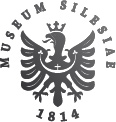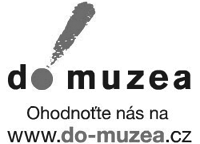ČASOPIS SZM SÉRIE B – VĚDY HISTORICKÉ
LXV/2/2016
OBSAH/CONTENTS
STUDIE/STUDIES
Marek SKUPIEN: Kapitoly z dějin farnosti Hať na Opavsku do konce první třetiny 18. století / Chapters from the History of Parish Hať in Opava Region till the End of the First Third of the 18th Century
(s. 101–120)
Abstract
The presented study attempts to reconstruct the history of Catholic parish at the Church of St. Mathias in the
village Hať in Opava region till the end of the first third of the 18th century. At that time, thanks to the benefactor,
Jesuit College in Opava, new stone Baroque church was built in Hať; it was extended at the end of the 19th
century. The article is based mainly on the study of sources. In the first place the author concentrated on the
ecclesiastical administrators, property relations of the church and vicarage, Hať churches and their contents,
parish dwelling, the extent of parish territory and the role of the parish in the context of church administration.
Keywords: National parish, church, Catholic Church, Lutheran, Opava region, Olomouc diocese, church administration
Pavel ŠOPÁK: Architektura Vidnavy v 19. století: témata, osobnosti, proměny stylu / Architecture of Vidnava in the 19th century: Themes, Personalities, Changes of Style
(s. 121–136)
Abstract
The contribution is concerned with the building culture of Vidnava (Jeseník region) in the 19th century. The
problems are presented with respect to the changes in typal structure of architecture (administrative, school,
farm buildings) and to the contribution of building culture personalities from local architects. Attention is
drawn to the participation of personalities such as Richard Völkel and in particular the Wroclaw diocesan architect
Joseph Ebers.
Keywords: Czech Silesia, architecture of the 19th century, architecture of typology, historicism, Vidnava, Ebers
Joseph, Völkel Richard, Gröger Franz
Martin JANÁK: Práce domácích malířů porcelánu ve sbírce Slezského zemského muzea – malby z dílen Daniela a Ignáce Preisslera, Ignáce Bottengrubera a F. Mayera / The Work of Independent Painters on Porcelain in the Collection of the Silesian Museum in Opava – the Paintings from the Workshops of Daniel and Ignaz Preissler, Ignaz Bottengruber and F. Mayer
(s. 137–146)
Abstract
The study presents the concept of the so called independent porcelain painters in the 18th century Europe. It
focuses on three examples of this type of painting in the Collection of the Silesian Museum in Opava. Presenting
a leaf-shaped dish in Böttger's porcelain decorated in the workshop of Daniel and Ignaz Preissler, a tea bowl
and a saucer decorated by Ignaz Bottengruber (DuPaquier porcelain), and a Meissen-porcelain plate with decoration
attributed to F. Mayer, the study approaches their individual designs in the context of the known historical
background of the painters as well as the acquisition context of the works of art.
Keywords: hausmaler, independent porcelain painter, china, Silesian Museum, collection, Ignaz Preissler,
Daniel Preissler, Ignaz Bottengruber, Franz Ferdinand Mayer
Jiří JUNG: Julius Lundwall ve sluţbách kníţat Lichnovských / Julius Lundwall in the Dukes Lichnowsky's Service
(s. 147–162)
Abstract
In 1894-1913 an outstanding Opava architect Julius Lundwall often cooperated with the Lichnowsky dynasty for
whom he designed and constructed tens of buildings. The buildings were primarily for manor Chuchelná in
Prussian Silesia. The buildings constructed in greige brickwork correspond to the common architectural practice
in the Prussian Silesia of that period; however, it is rather exceptional in Lundwall's architectonic production.
Therefore the authorship of the buildings could be attributed to his colleague Ferdinand Hickel. The study
surveys Lundwall's extensive production for Lichnowskys and points out its specifics.
Keywords: Silesia, Karl Maria Lichnowsky, Karl Max Lichnowsky, Julius Lundwall, Ferdinand Hickel, brick
neogothic, historicism, architecture, nobility, manor, forestry buildings
Tomáš THON: Autorství vybraných skladeb ve varhanních knihách Ondřeje Skotáka; pohled badatele a vydavatele / Authorship of Chosen Compositions in Organ Books by Ondřej Skoták; View of the Researcher and Publisher
(163–170)
Abstract
The Modern research possibilities helped the discovery of a libretto from the National Museum – Czech Museum
of Music composed by W. A. Mozart, Antonio Salieri and the unknown Cornetti, disclosed in early 2016. In
the background there are findings and discoveries of minor composers which are also an important part of the
musical culture of the region. It is the schoolmaster's work related with activities of organist and church choirmaster,
which is preserved in the so-called Organ books they wrote themselves. From the two organ books by
Ondřej Skoták from Slavkov near Opava, based on the comparative practice, there were newly identified
authorships of compositions that were released in 2004 and 2015 as anonymous pieces.
Keywords: modern research possibilities, pipe organ, Silesian Museum in Opava, organ books, organ works,
schoolmaster, anonymous, authorship
Irena KORBELÁŘOVÁ – Rudolf ŽÁČEK: Obraz opavského gymnazijního muzea v osobních výpovědích císaře Františka I. / Picture of Opava Grammar School Museum (Troppauer Gymnasialmuseum) in Personal Travel Diaries of Francis I, Holy Roman Emperor
(171–178)
Abstract
The article introduces the grammar school museum in Opava (Troppauer Gymnasialmuseum) as briefly described
and evaluated in personal travel diaries of Francis I, Holy Roman Emperor based on his visits in 1817 and
1820. We include also the edition of entries in the original language.
Keywords: museum, diary, Francis I, Silesia, Opava
Miloš ZAPLETAL – Martin POLÁŠEK: Monitorování koncentrace ozonu uvnitř a v okolí depozitářů Slezského zemského muzea / Indoor and Outdoor monitoring of Ground-level Ozone Concentrations in Depositories of Silesian Museum in Opava
(179–188)
RECENZE/REVIEWS
(s. 189–196)
Jan Al Saheb – Karel Müller, Galerie drţitelů Paskova (Martin Slepička), Pavel Weisser, Renesanční figurální sgrafito na průčelí moravských městských domů (Hana Prixová Dvorská), Martin Slepička, Kostel Svaté Kateřiny Alexandrijské v Ostravě-Hrabové (Marek Skupien), David Pindur – Pavla Pindurová, Bruzovice, Z minulosti slezské obce (Tomáš Adamec), Branislav Dorko, Historie tělovýchovy a sportu ve Vítkově (Zdeněk Kravar).
KRONIKA/CHRONICLE
(s. 196–200)
Hudba v zemích koruny české v raném novověku (Markéra Wiesnerová), Konference Muzea a kulturní krajina – Policie a muzea (Ondřej Kolář), Ustavující jednání pracovní skupiny Sklo – keramika (Jana Stixová), 60 let a pořád nejmladší (Irena Hajzlerová).
Poslední aktualizace článku: 19.06.2020
Vytisknout celý článek







